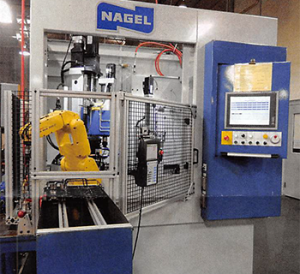There is constant pressure on manufacturers to both enhance the efficiency of manufacturing and enhance the performance of manufactured products, often by taking the weight out of components. For automotive manufacturers, this is coupled with pressure to reduce emissions. According to Sanjai Keshavan, manager of the ECO Hone and Microfinishing Systems Division of Nagel Precision Inc., all these pressures helped lead to the development of superfinishing — a finishing process first applied to production around the 1930s that is designed to enhance a component’s surface finish while also improving its micro-contour accuracy through improved roundness, straightness, cylindricity and more.
Despite its usefulness for automotive parts, the application potential for superfinishing is wide-reaching. From job shops to large original equipment manufacturers (OEMs), superfinishing has found roles in small medical parts such as hip and spine implants and aerospace parts such as turbine and landing gear components. According to Keshavan, superfinishing can conceivably be used in any OD application that requires the precise removal of small amounts of stock on the order of 0.002-0.005 mm from the diameter. While steel is the most common material to superfinish, he says, the process can also be applied to exotic alloys, titanium, aluminum and even glass and ceramic.




